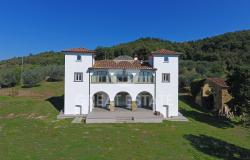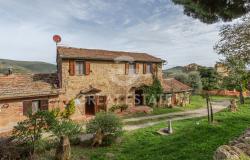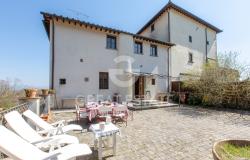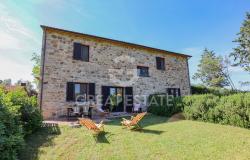Prices increased marginally and sales saw a small decline in Tuscany, where the market is also expected to remain steady throughout 2009
Prices are up and sales down in Tuscany. This, in a nutshell, is the finding of property intelligence company Scenari Immobiliari, which just released its seventh annual report on the Tuscan market.
Sales will drop by an estimated 1.4% by the end of 2008, while house prices will go up by 2.2%. As a result the residential market turnover will only be marginally down (-0.5%) over 2007.
This is the first time Tuscan residential turnover fails to increase in seven years—it grew consistently since 2001, with a 33% rise in the provincial capitals and a 40% one elsewhere. That said, when seen in the wider context of the Italian and European property markets, “the performance of Tuscany’s residential sector is positive,” states Scenari Immobiliari.
Sales chiefly declined in the provincial capitals (-4.8%) whereas, outside them, they went up by about 1%. Sale times became longer (from six to 12 months for any property) and the margins for negotiation over the asking price are wider. Prices slowed down more markedly for some specific housing categories (homes in urban outskirts or semi-central areas, and in some provinces) than others—residential properties in the city centres of Florence, Pisa, Prato and Siena all recorded increases of 4.3% or more.
In line with the rest of Italy, prime properties in sought-after city neighbourhoods also saw a healthier price increase than other market segments—they went up by an average 3.5%.
Overall, Scenari Immobiliari expects the Tuscan market to remain stable in 2009, with a 1% increase in prices, a further drop in sales volumes (in the region of 2%) and a total increase in residential property turnover of 0.5%.
These topline figures, however, chiefly refer to the town and city markets—the provincial capitals alone account for 39% of all residential sales in 2008. As the Scenari Immobiliari report states, while Tuscany has about 1800 villages with unique architecture set against an exceptional landscape, these places depend from the bigger towns for many functions. “As a result, towns have a great power of attraction, which keeps growing—60% of Tuscany’s inhabitants live in the 38 most populated comuni, which count more than 28,000 people. The property market’s structure is based on this territorial traits, so the sector’s performance is largely dependent on sales volumes, prices achieved and supply offered in the top 38 comuni.”
Although the town and country markets are obviously interlinked, they do have some differences. In the rural market, for example, sale times and discounts over the asking prices have not increased to the same extent as they have in town, according to Scenari Immobiliari. For this reason, prospective countryside buyers should take these regional trends with a pinch of salt.
This is particularly true for foreigners, whose property preferences tend to diverge from Italians, as it clearly emerges from the Scenari Immobiliari report. This year, the company interviewed prospective Italian buyers to find out what their ideal home is like. The vast majority would like a city flat, preferably with a terrace, whereas the property of choice among foreign buyers—a casale in the countryside—is only popular with ¼ of the Italians.














